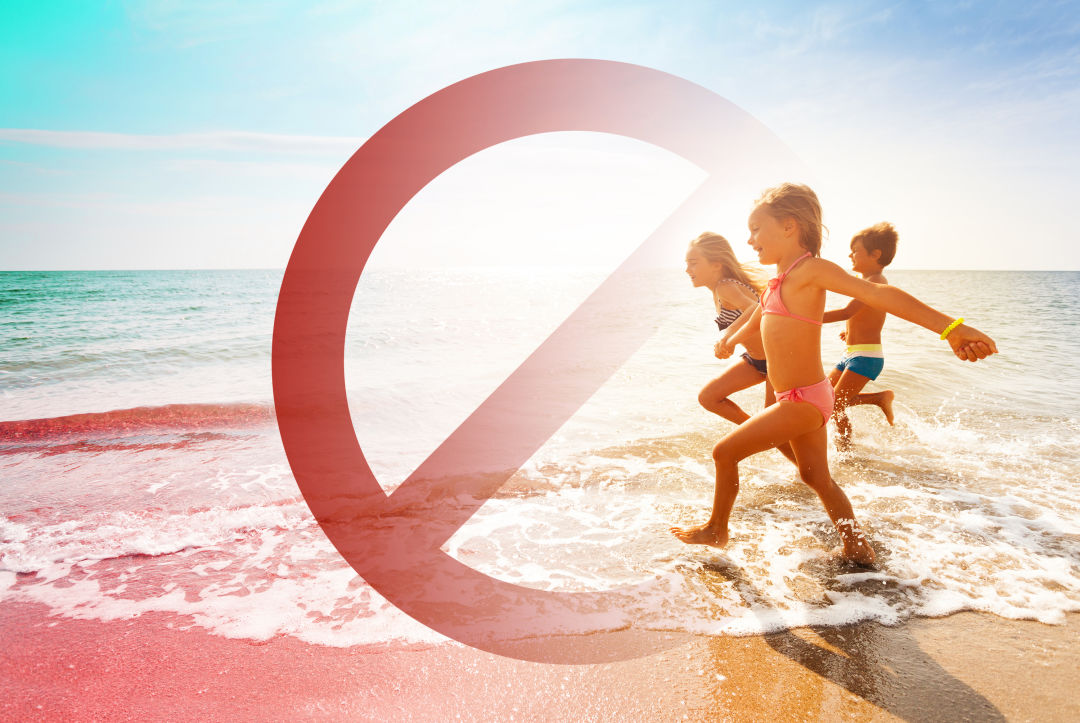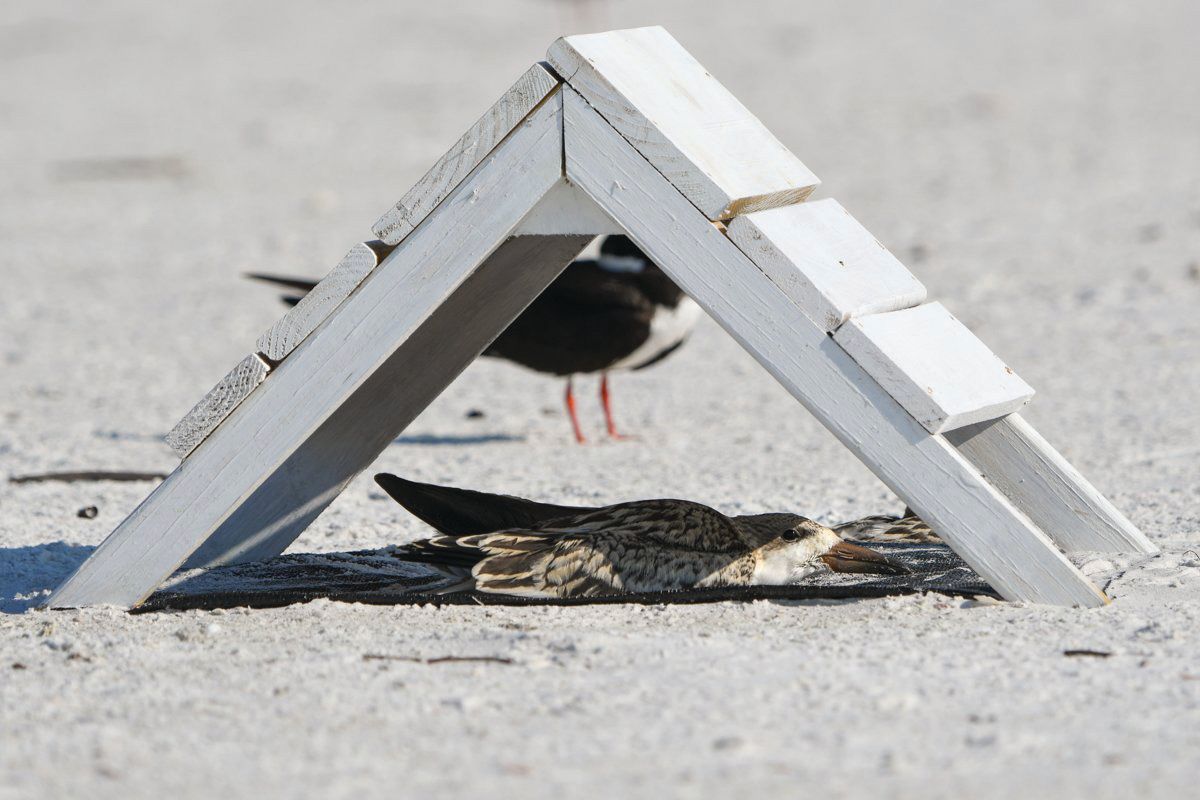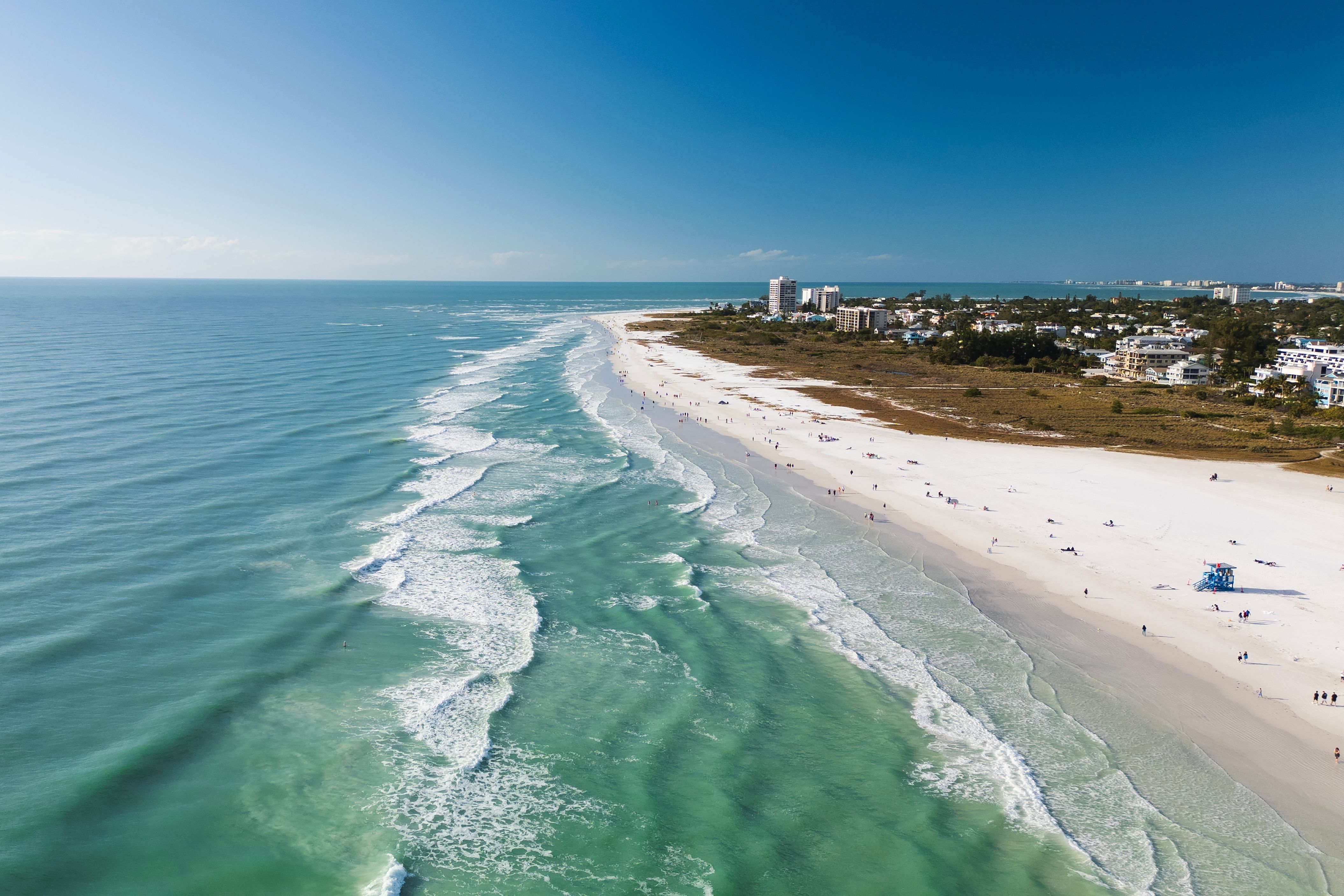How Seriously Should We Take No-Swim Advisories?

It may seem like no-swim advisories for Sarasota beaches are happening more frequently this year, but, according to the Florida Department of Health, this year's advisories have not been more excessive than in years past.
“We’re right on track with where we were last year," says Steve Huard, a public information officer for the Sarasota County office of the department.
Every Monday, the health department collects water samples at 16 popular beach sites across Sarasota County, from Longboat Key to Blind Pass. The testing has been ongoing since 1998 as part of the Florida Healthy Beaches Program. The water samples are tested for high concentrations of a bacteria called Enterococcus as well as Karenia brevis, the organism that causes red tide.
This summer’s advisories were announced due to high levels of Enterococcus. When a sample exceeds acceptable levels (more than 70 enterococci colony forming units per 100 milliliters of beach water, to be exact), the site is retested. If both tests are consistent, the health department issues a no-swim advisory for that location.
Despite being a fecal bacteria, and the stomach-curling sound of that, “Enterococci doesn’t necessarily, in and of itself, pose a health risk to many people,” says Tom Higginbotham, the director of environmental health and emergency preparedness at the health department. “However, it could indicate that there are other things present that could be harmful, that includes viruses, other bacteria, protozoa." The Environmental Protection Agency recommends testing for Enterococcus as an indicator of fecal contamination.
While the health department itself doesn’t investigate the possible cause of contamination, it works with other agencies to ascertain if there is a direct polluting point such as a broken sewer line. This summer, according to Sarasota County, there have been no sewage line breaks.
Enterococci can live just about anywhere—even on living or decaying plants, sand or soil—though it most commonly resides in the intestines of warm-blooded animals, including humans, pets, various livestock like cows and chickens, and coastal shorebirds—so its presence in the water doesn’t always indicate a sewage leak or human waste. “Even if you had a wild beach that a human never stepped foot on, you’d still find the bacteria,” says Higginbotham.
Each individual testing site can have occasional conditions that exacerbate concentrations of Enterococcus due to water currents, storm direction and tide flows.
“[The contamination] can be literally right there at the beach,” says Huard, pointing to localized factors such as microclimate conditions or temporary microhabitats like wrack lines. These seaweed or drift algae lines that wash up along the shore are opportunistic feeding grounds for shore birds and other scavengers, who tend to excrete there as well. Once the currents change or the tide shifts, the contamination typically abates. The county’s rapid response team did observe “a wrack line of decaying algae around the rocks and along the shoreline” in the most recent advisory locations: Siesta Kay, North Lido Beach and Lido Casino.
Stormwater runoff appears to be correlated with this summer’s contamination. “We have seen, in the weeks prior to these elevated levels, some significant rainfall," says Higginbotham. "It takes time for water to make its way to the Gulf.”
Stormwater can travel all the way from east of I-75 through tributary rivers and into the Gulf. Elevated levels are more common in the wet season, “especially early on in the rainy season, after we’ve gone through a very dry winter or a dry spring,” Higginbotham says. But we could also see a spate of advisories after rainfall even in the winter, especially following a dryer period.
On no-swim advisory days, while the beaches don’t close, water recreation is not recommended. If a no-swim advisory due to Enterococcus doesn’t deter you from enjoying the water, knowing the health risks might, especially for those with weakened immune systems like chronic liver disease, kidney disease or diabetes.
“A fact that we like to drive home is that anyone who is immunocompromised in any way, or if you have cuts or sores on your body, they should be very mindful when they see those advisories, because those other organisms could cause them problems,” says Higginbotham. The general risks are gastrointestinal illness if you swallow contaminated water, while wounds or cuts could develop into infections or rashes.
If you’re healthy and you do decide to take the risk and swim in contaminated water on advisory days, the Department of Health recommends that you rinse off at beach showers as soon as possible after being in the water and head home to wash well in a shower or bath directly after visiting the beach. For those with health issues, this is the recommended practice after any dip in the Gulf.
If you’re planning a trip to a local beach, check the health department’s website for up-to-date Enterococcus levels and Mote Marine Laboratory & Aquarium’s Beach Conditions reports for red tide. For those who love a map and are looking at statewide red tide conditions, the Florida Fish and Wildlife Conservation Commission is your source.



